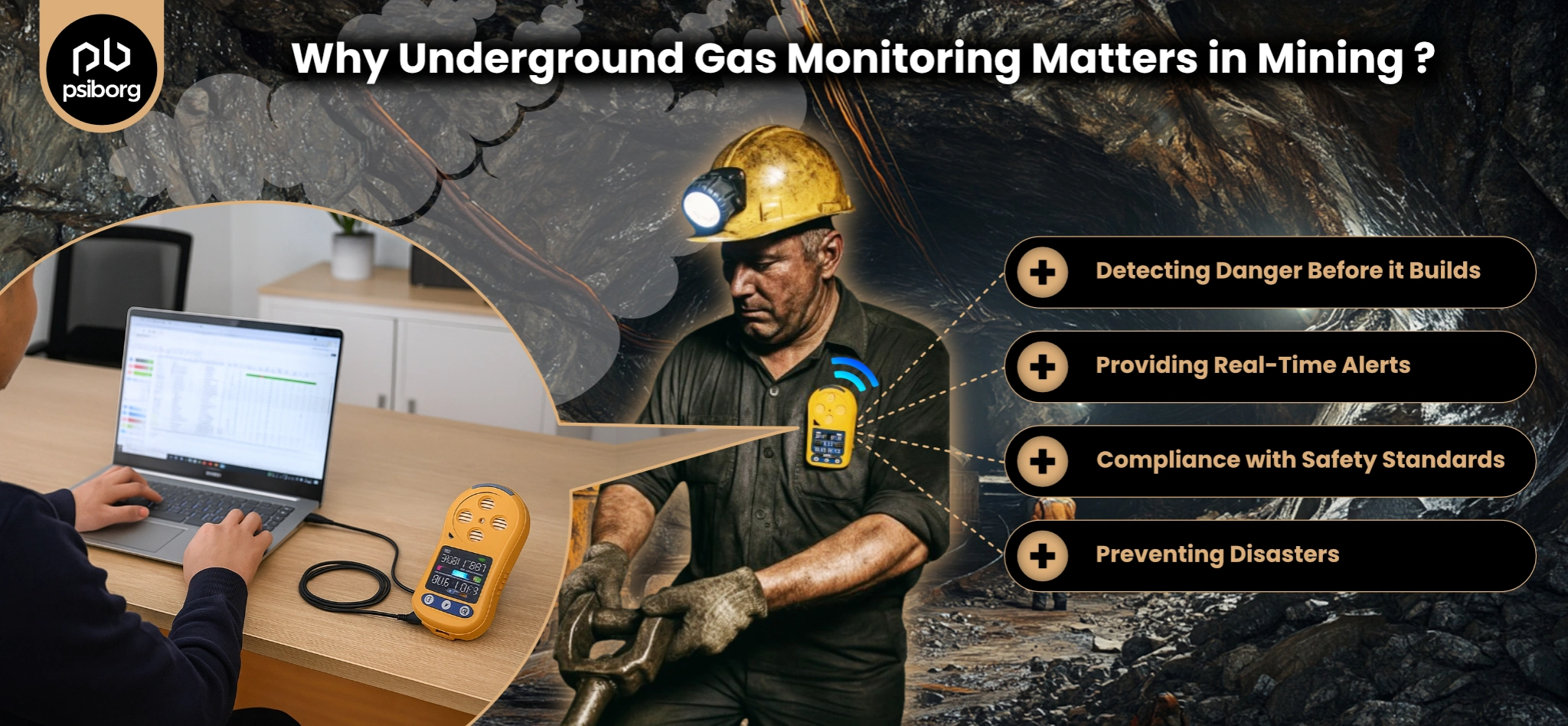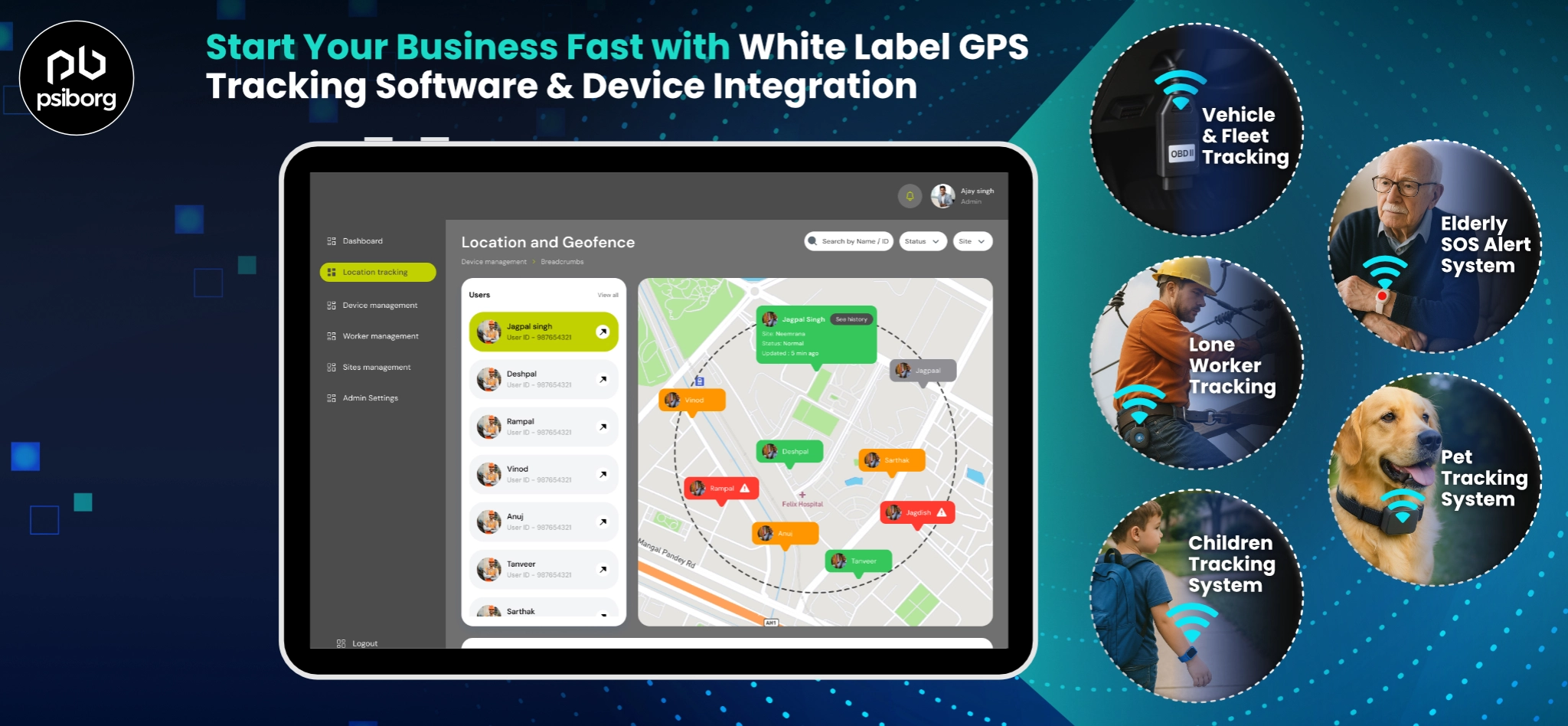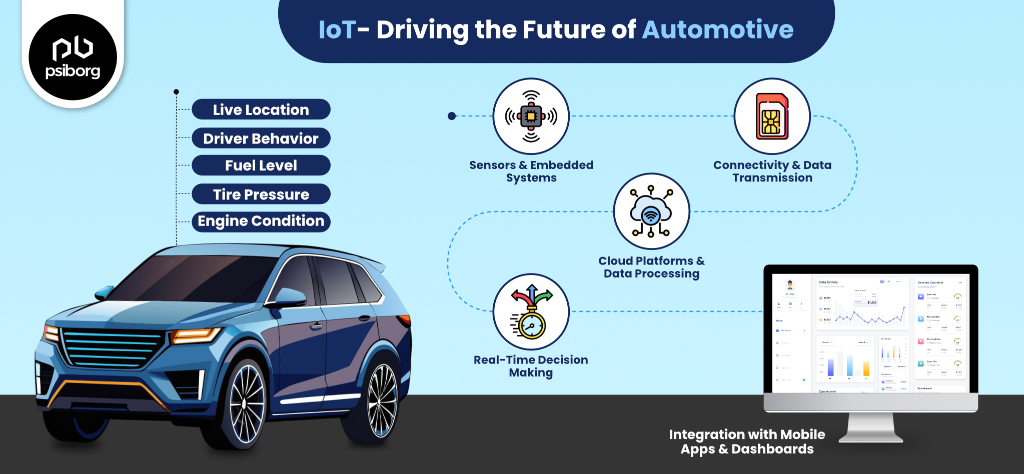We already have discussed a lot about EV monitoring and EV charging management systems in our blogs. But another topic that also needs to be explained in smart EV solutions is the OCPP communication protocol, more specifically EV charging with OCPP.
Open charge point protocol (OCPP) is not a newly introduced thing. If you are in any way related to the EV charging station business, you might have come across the term OCPP.
But how much do you know about OCPP?
OCPP is an open-source communication protocol that is used by electric vehicle chargers.
Read the blog till the end to understand everything about open charge point protocol and EV charging with OCPP.
Understanding Open Charge Point Protocol/OCPP
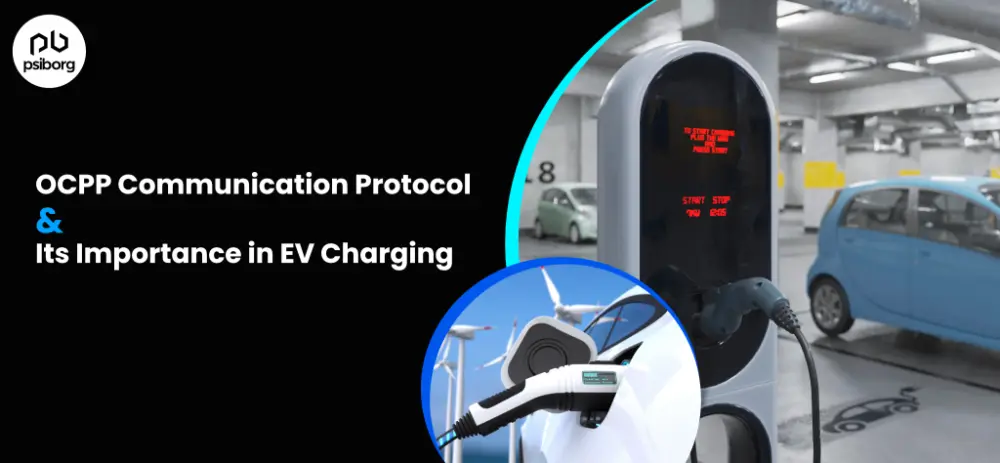
In simple terms, open charge point protocol, or OCPP communication protocol, is a technical language that is used by EV chargers and charging networks to communicate.
Now there are several other languages through which EV chargers and charging management systems communicate, but since OCPP is an open-source protocol, it can work with any changing management software.
So if you are choosing an OCPP communication protocol for your charging station, you get the freedom to change your charging network whenever you want.
That means you don’t have to worry about choosing the hardware and software of the same brand for effective communication.
Not all EV chargers and management software support OCPP, but systems do enjoy a wide range of benefits.
Open charge point protocol, or OCPP, is a set of rules that allows EV charge points and charging management systems to communicate. Just like mobile phones and mobile networks.
Since it is an open-source protocol, it can be obtained free of charge, making it more easy to implement across the EV industry.
The History and Evolution of OCPP
The story of OCPP started back in 2009, when the first version of OCPP was developed and tested in private by ElaadNL.
The next year, in 2010, the first version, OCPP 1.2, was launched for the public.
Another version of OCPP (OCPP 1.5) was published in the year 2012.
In 2014, Open Charge Alliance was founded. An Open Charge Alliance (OCA) is an international standard organization that developed and promoted the OCPP protocol for EVs.
At OCA, public and private EV infrastructure leaders come together to promote an open standard protocol.
The OCPP protocol consists of two components. The first is the OCPP protocol itself, which defines how to charge points and the central server communicate with each other.
The second component is the OCPP profiles, which define what data is transferred between the charge point and the central server.
At the charge point, the OCPP communication protocol is used to allow drivers to connect their electric vehicles and initiate the charging process.
The charge point is configured with the driver’s details, which are then sent to the central server.
The central server uses this information to authenticate the driver and initiate the charging process.
At the same time, the charge point communicates with the central server to send information such as the amount of energy that has been used, the current state of the charge point, and any faults that have occurred.
This information is used by the central server to generate billing information, monitor the performance of the charge point, and carry out maintenance tasks.
How Does Open Charging Point Protocol for EVs Work?
As you understand by now, OCPP is a language that facilitates the communication between the EV charging management system and EV charging stations.
But let’s understand technically how it’s possible and what information is passed along when they do.
So, in the entire workflow, there are two major components involved- a charging point and a central charging system. OCPP helps manage two-way communication between these two components. Here’s the typical communication flow.
1. EV Charging Station
The EV charging station, or the EV charging point, is a physical unit installed in public, commercial, and residential areas for charging electric vehicles. These charging stations are equipped with both hardware and software that allow them to communicate with the central system.
The charging points can be of several configurations, such as AC chargers, DC chargers, and ultra-fast chargers, each suitable for different needs.
Also Read: IoT for Electric Vehicle Monitoring
2. Central Charging System
The central charging system, or charging management system, is a backend software platform that manages multiple charging stations within one network.
So, a central charging system is basically responsible for overseeing all the interactions between charging stations and users, such as:
- The charging system constantly monitors the operational status of charging stations and identifies issues like connectivity problems, hardware faults, or unauthorized access attempts.
- The system also manages the billing and payments by recording charging sessions based on per-kWh prices or time-based pricing.
- The central system can also schedule maintenance and firmware updates and send instructions to troubleshoot issues.
- Another task of the system is energy management. It optimizes the distribution of power across several charging stations, to prevent grid overloads and reduce peak time demand cost.
Thus, with the help of the OCPP communication protocol, secure two-way communication is established between the involved components. Once the connection is established, messages are exchanged between them.
And through this invisible communication, all the important tasks like starting, running, and stopping the charging session are made possible.
The Workflow of EV Charging With OCPP is:
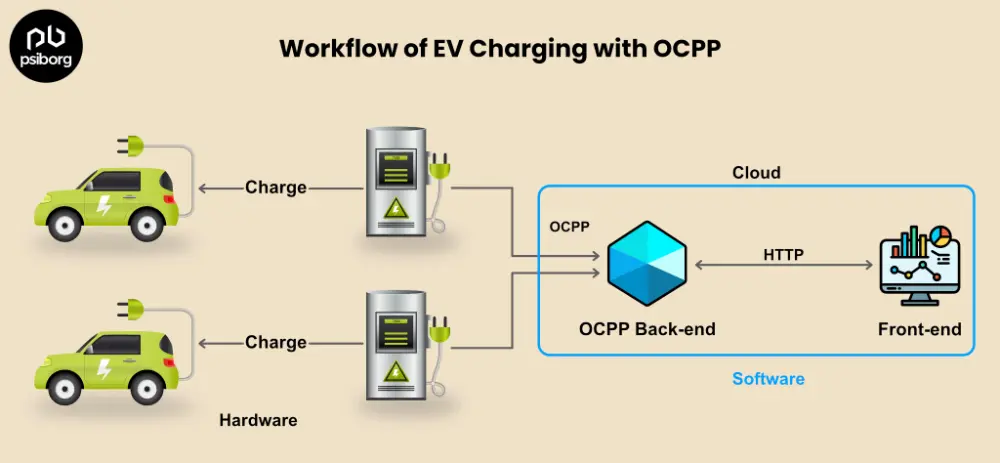
- An EV driver reserves a charger at the nearby available charging station through a mobile app before their arrival.
- On the backend, the information is processed, and the selected charger is put on hold for the driver.
- Once the driver reaches the location, he identifies himself, and the charger permits to start charging. Here, the identification can be done through a QR code, mobile app, RFID, or the Tesla way, that is, plug and charge.
- After the identification, the charger starts the charging session.
- Once the charging session is complete, the driver receives the notification, regarding the same. A series of notifications can also be integrated, like- “charging started,” “battery at 95%,” “session ended,” and more.
- When the driver disconnects the charger and returns the connector to the charger, the charging limit is measured for payment processing. It can be either time-based or quantity-based.
- In the end, the billing is handled by the backend, the central system. The charger sends the consumption data to the backend the central management system bills the cost of the session according to the set pricing.
Benefits of Using Open Charging Point Protocol
Before you consider moving ahead with OCPP, also have a look at some excellent benefits as well. Here are some:
1. OCPP Provides Flexibility
Changing already installed hardware comes with several hurdles, but switching the software should be easy. However, it’s not that easy if you choose closed protocols.
If an EV charging station owner doesn’t like the software and feels that the hardware doesn’t live up to what it should, then the owner cannot just the software, he/she has to change the entire hardware as well.
But by choosing OCPP, an open protocol, the owner is free to replace the software or the hardware anytime they want. With OCPP, charging station owners get the flexibility to evolve and change in these times when new technologies are daily transforming our ways of living.
2. OCPP Also Allows to Communicate With Grid and Utility Programs
Other than the hardware to communicate with the software, the OCPP also facilitates the communication between grid or utility programs.
This capability is important in present times when the demand for electricity is increasing due to the rise of electric vehicles.
OCPP allows charging stations to communicate with the grid and optimize charging times, minimize cost, and balance energy demand.
It’s best for load management strategies such as time-of-use pricing, demand response, and peak shaving that prevent grid overload during peak times.
3. OCPP Compliance Simplifies the EV Ownership Experience
The OCPP-compliant charging stations simplify the EV ownership experience by standardizing the way charging stations interact with network services. This standardization will help EV owners find, use, and pay for EV charging services, regardless of the network or charging station brand.
This also means that EV owners are not locked into a specific service provider and can charge their vehicles at any location without hassle.
4. OCPP Improves Privacy and Security
OCPP has security protocols to protect sensitive data like payment details and user information. Moreover, open standards like the OCPP communication protocol are continuously updated and improved by a global community, making sure the latest security measures are incorporated.
Additionally, OCPP’s use of standard encryption methods and secure communication protocols helps protect the data transmitted between the charging station, management systems, and utilities, providing peace of mind to EV owners and operators.
5. Future-Proofing and Scalability
Since EV technology is evolving daily, more and more individuals like the idea of being electric vehicle owners. And to add to all this, OCPP ensures charging stations are future-proof and scalable.
As mentioned earlier, the OCPP communication protocol is an open standard protocol, so it is continuously updated to accommodate new features, such as faster charging rates, better energy management, and a better user interface.
Being said, future-proofing is also important for charging station owners who are looking to scale their business operations and adapt to new market demands. That’s why integrating OCPP is the best option here.
To End,
Understanding what OCPP is and how it works is important for anyone who is involved in the EV industry or wants to step into the most talked about electric vehicle industry.
EV charging station owners can benefit a lot by using the OCPP communication protocol, as it facilitates interoperability and makes sure that EV chargers from different manufacturers work together.
Today OCPP communication protocol is like a cornerstone in the development of a reliable EV charging network. New features are being introduced to improve the charging experience, such as the recent introduction of “plug & charge,” where a driver simply needs to plug in a vehicle and a transaction automatically occurs.
However, implementing Open Charge Point Protocol (OCPP) can be a daunting task.
But that’s where PsiBorg Technologies can come to the rescue.
PsiBorg helps you develop an EV charging network with both hardware and software that are certified by the standard to maximize the chances of government support and continuous growth in the EV market.
FAQs
The OCPP (Open Charge Point Protocol) standard protocol is an open-source communication standard for EV charging stations. It facilitates interoperability between charging hardware and software, allowing for flexible management, remote control, and integration with various networks and services.
OCPP (Open Charge Point Protocol) and OCPI (Open Charge Point Interface) are both standards for EV charging, but they serve different purposes:
OCPP focuses on communication between charging stations and central systems, managing operations like charging, monitoring, and control. Whereas, OCPI facilitates communication between different charging networks, enabling interoperability and roaming.



